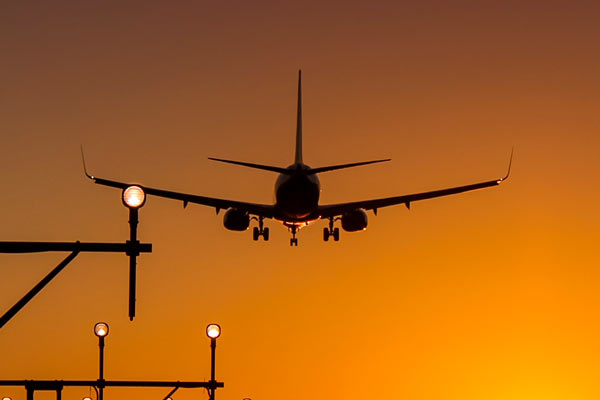The leading edges of aircraft wings must meet a very demanding set of characteristics. New research shows that the combination of steel composite metal foam (CMF) and epoxy resin has more desirable characteristics for use as an advanced material than aluminum, which is widely used today.
“We call our hybrid material 'Infusion CMF,'” says Afsane Rabi, professor of mechanical and aerospace engineering at NC State. “And while the CMF is about the same mass as aluminum, it is more durable and has other characteristics that make it more attractive in terms of flight performance, safety and fuel efficiency.”
CMF is a foam that consists of hollow metal spheres made from materials such as stainless steel or titanium in a metal matrix of steel, aluminum, or metal alloys. For this study, the researchers used steel-on-steel CMF, which means the spheres and matrix were made of steel. Previous work has shown that metal foam is surprisingly tough: it can withstand .50 rounds, withstand high temperatures, and block the explosive pressure from explosive incendiary rounds.
Infused CMF is produced by immersing steel steel CMF in a hydrophobic epoxy resin and using vacuum forces to draw the resin into both hollow spheres and much smaller pores present in the steel matrix itself. This results in about 88 percent of the pores of the CMF being filled with epoxy.
The researchers then tested both the infusion CMF and aerospace grade aluminum to see how they perform in three areas: the contact angle, which determines how quickly water drains out of the material; insect adhesion or how well the insect pieces adhere to the material; particle wear, or how well the material resists erosion. All of these factors affect the characteristics of the leading edge of an aircraft wing.
The contact angle is a measure of how well water accumulates on the surface. The lower the contact angle of the material, the more water adheres to the surface. This applies to aircraft wings, because water build-up on the wing can affect flight performance. The researchers found that the infusion CMF had a contact angle 130% higher than that of aluminum, a significant improvement.
Insect adhesion is measured in two ways: by the maximum height of insect debris that accumulates on the material, and by the surface area covered by insect debris on the surface of the material. Again, infused CMF outperformed aluminum by 60% in maximum height and 30% in terms of area covered.
Researchers also conducted shot blasting experiments to simulate the erosion caused by wear and tear that occurs when using aircraft wings. The researchers found that while sandblasting increased the surface roughness for the infused CMF, it was still better than aluminum. For example, in the worst case, the infusion CMF still had a 50% higher contact angle than aluminum.
In other words, the foam retained its properties due to erosion and wear, which indicates that it will extend the life of the front wing components and reduce maintenance and replacement costs.
“Aluminum is currently the preferred material for wing leading edges for fixed and rotating aircraft,” says Rabiei. “Our results show that infusion CMF can be a valuable substitute, offering better performance for the same weight.”




